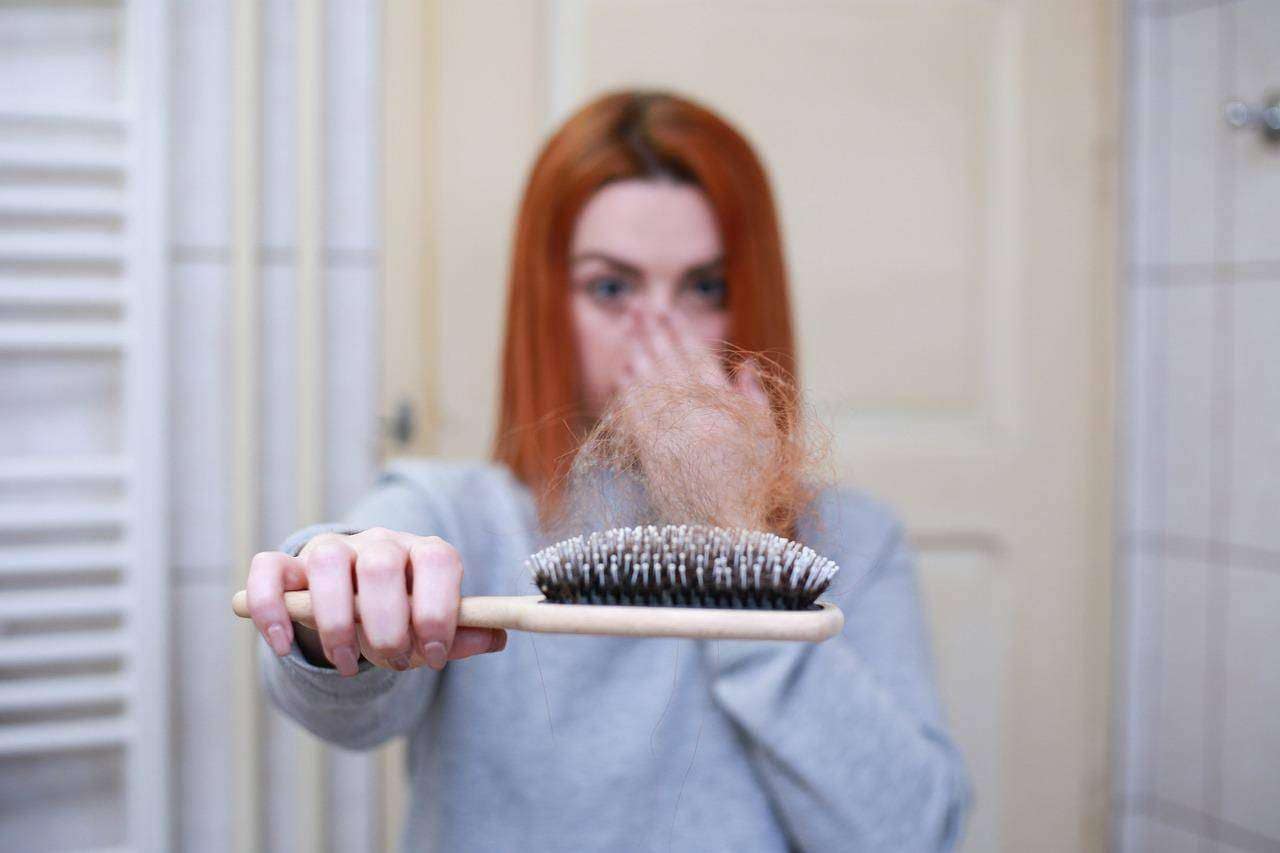The Most Common Causes of Hair Loss is stress, illness, hormonal changes, or genetics. It also can trigger by medication, treatment, or other factors. Their loss in the first place is one of the hair loss treatments’ most concerning features. In the best-case scenario, patients risk wasting money on unsuitable “miracle cures” or even effective medicines that, regrettably, aren’t right for them. At worst, some individuals may be putting their health in danger by prescribing potent pharmaceuticals on their own. I don’t have a problem with people who suffer from hair fall saving money by buying inexpensive generic medications online. Hair loss is a common problem but there are many hair loss treatments. But I firmly believe that they ought to at least ask their doctor to ensure that a chosen treatment is appropriate for their particular requirements.
>>Before Bed 1 Minute Magic To Regrow Your Hair <<Watch Video>>
Common Causes
Stress is one of the main causes of hair fall in people. This is because stress hormones affect the body’s ability to produce healthy hair follicles. If you are stressed, try taking some deep breaths and relaxing. You might even consider getting a massage or seeing a counselor. The causes of hair loss are numerous. Before looking at the most common causes of premature hair loss, it is important to realize that some hair loss is completely natural. Hair grows from the follicle, which is a small skin organ designed to produce hair in a cycle that repeats:
1. Prolonged growth phase (Anagen Stage): This stage lasts typically between two and seven years, with an average annual growth rate of six inches (15 cm).
2. Brief transition phase (Catagen Stage): This transitional phase lasts for two to four weeks. The hair shaft separates at this stage and ascends within the follicle.
3. The third stage is the resting time, which lasts for about three months and allows the hair to separate before coming out.
Another causes of hair loss in humans is hormonal changes. As we age, our bodies begin to produce less estrogen and more testosterone. This hormonal imbalance can causes of hair loss. The normal phase of hair growth repeats itself when development begins at this point. Unfortunately, various conditions can disrupt the natural process of hair growth, leading to early baldness.
Frequent Causes of Hair Loss
The most frequent causes of hair loss—which may account for up to 95% of recurrent hair fall in both men and women—are androgenetic alopecia and heredity. It often occurs as people age and progresses in predictable phases over a range of times. Each follicle has a growth cycle that is genetically predetermined, with some follicles having shorter active periods than others. As a result, the inherited balding tendencies that are so well-known to us all start to appear.
The following conditions must exist in order for this form of baldness to manifest:
1. A propensity to hair fall due to genetics (as explained above).
2. The existence of testosterone.
3. Aging, or the passage of time necessary for the first two causes to take effect.
These hormones have the following short-term effects on the hair growth cycle:
Some hair follicle and sebaceous gland cells have high quantities of the enzyme 5-alpha-reductase. The terminal hairs get smaller as a result of DHT. This results in short, fluffy, and delicate vellus hairs that are insufficient for covering the scalp. Until this hair is permanently removed, the growth stages gradually get shorter.
The immune system condition alopecia areata causes hair follicles to stop growing all over the scalp. Most of the time, the hair grows back on its own, but in the interim. The condition can be quite distressing for those who experience it. Figuring out exactly what the cause is can be challenging. Consult your doctor if you believe you may be experiencing this type of hair loss. Your doctor will do a physical exam and blood tests to identify the cause.
Remedies
Telogen effluvium is most frequently observe in those who have recently endured trauma. And is typified by a widespread thinning or loss of hair beyond a period of months. Common triggers include chemotherapy, major surgery, life-threatening sickness, delivery, and severe conditions. The best part is that telogen effluvium-related aberrant growth behavior is transient and reversible.
Before choosing a course of therapy, there is a few other less common causes of hair loss that must rule out. Hair loss due to constant tugging, usually as a result of hairstyles, is known as traction alopecia. Thinning hair causes by breakage, which is often the result of over-styling or exposure to environmental pollutants and sunlight. Last but not least, serious illnesses or nutritional deficiencies can have side effects, including varying degrees of hair loss.
>>A unique recipe for supporting Natural Hair Growth <<Watch Video>>
This short article makes it clear that determining the true causes of hair loss is not always an easy process. Once the problem has been determined by you and your doctor, you can start working on getting your hair back to normal. The good news is that effective hair loss treatments exist for most hair loss causes and conditions. The next post in this series will examine some of the top hair fall remedies currently on the market.
Read our latest article: Most Common Hair Loss Causes for Women

